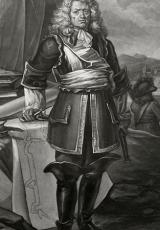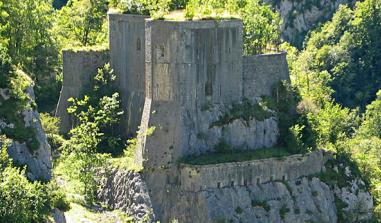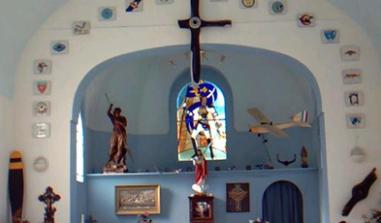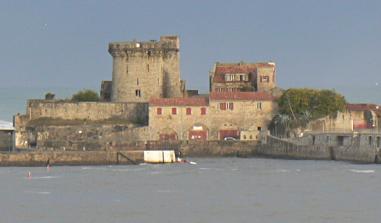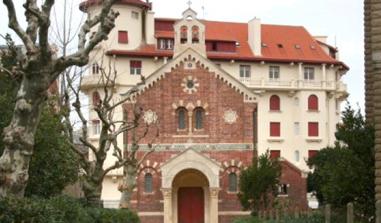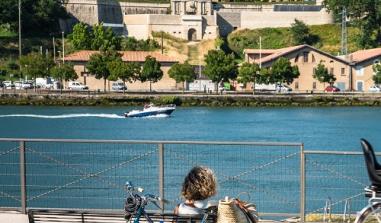The Saint-Jean-Pied-de-Port Citadel

Vue aérienne de la Citadelle. Source : http://www.st-jean-pied-de-port.fr
Built on the site of the former fortified château of the kings of Navarre, the Citadel looks over the walled town.
The capital of the Basse-Navarre and an important crossing route over the Pyrenees, Saint Jean Pied de Port, known in Basque as Donibane Garazi, was founded at the end of the 12th Century under the reign of the last kings of Navarre to protect the course of the river and access to the Roncevaux and Bentarte passes. Built on the site of the former fortified château of the kings of Navarre, the Citadel, which has recently been restored, looks over the walled town. It is a fine example of the defensive system of "Vauban-style" fortifications, with a glacis, moats, walls flanked by bastions with arrow loops, firearms, swing bridges, draw bridges and portcullis.
Constructed by Chevalier Deville in 1628 under the reign of Richelieu, during a time of religious wars and Franco-Spanish conflicts, it was later modified by Vauban. Vauban improved the defensive system, which consisted of four bastions, and planned outlying forts such as the redoubts, as well as the fortification of the whole of the town - only the first part of the project would be carried out. It is accessed by a ramp. In the western demi-lune there is a view over the town and the Cize basin. Around the internal courtyard and against the ramparts constructed above the underground vaulted casemates, are huddled the barracks, the governor's quarters and chapel, the powder stores and the well.
It was from this military position that in 1793 and 1794 all the expeditions against Spain were carried out, during which the Volunteers and later, the 10 companies of Basque Chasseurs distinguished themselves under the command of the would-be Marshal Harispe. In 1814, the Citadel did not succumb under pressure from Anglo-Hispanic-Portuguese troops and the war ended before it surrendered. During the 1914-18 war, German prisoners and French disciplinarians were held there. The premises would be used as a barracks until 1923.
Between 1936 and 1939, having become council property, the Citadel accommodated 500 Basque refugee children fleeing from the Spanish Civil War. The fortress is now home to a secondary education college.
Mairie de Saint-Jean-Pied-de-Port 13 place Charles de Gaulle 64220 Saint-Jean-Pied-de-Port Tél. : 05.59.37.00.92 Fax : 05.59.37.99.78 E-mail : mairie.stjeanpieddeport@wanadoo.fr Horaires d'ouverture du lundi au vendredi de 08h30 à 12h00 et de 14h00 à 17h30 Tourist Information Office 14, Place Charles de Gaulle 64220 Saint-Jean-Pied-de-Port Tel. +33 (0) 5 59 37 03 57 Fax: +33 (0) 5 59 37 34 91 E-mail:saint.jean.pied.de.port@wanadoo.fr
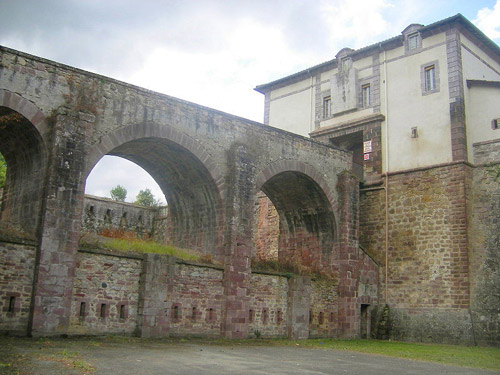
The Saint-Jean-Pied-de-Port fortifications. Author: Szeder László.
Source: GNU Free Documentation License, free of copyright
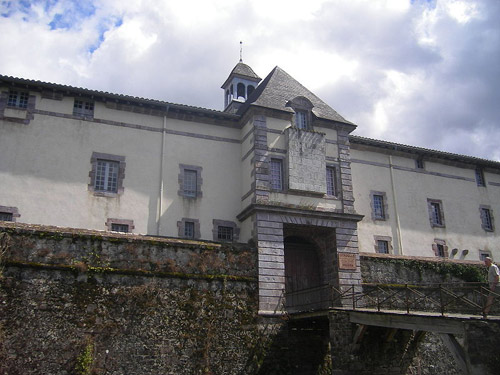
Saint-Jean-Pied-de-Port Citadel. Author: Szeder László.
Source: GNU Free Documentation License, free of copyright
Practical information
Chemin de la citadelle 64220
Saint-Jean-Pied-de-Port
Tél. : 05.59.37.00.92Fax : 05.59.37.99.78 Office du tourisme14, Place Charles de GaulleTél. : 05.59.37.03.57Fax : 05.59.37.34.91 saint.jean.pied.de.port@wanadoo.fr
Du lundi au vendredi de 08h30 à 12h00 et de 14h00 à 17h30


